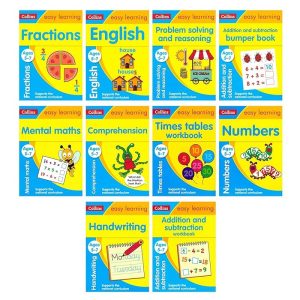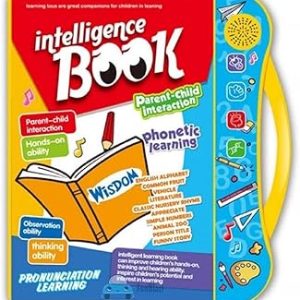Description
“100 Days of Money, Fractions, & Telling the Time” sounds like a creative educational theme that can be used to teach children fundamental math skills in a fun and engaging way over a span of 100 days. Here’s a breakdown of how you could incorporate each of these topics:
### 1. **Money (100 Days of Money)**
Over the course of 100 days, you can explore the concept of money in various ways:
– **Day 1-10:** Introduce different types of coins and bills, focusing on recognizing their values.
– **Day 11-20:** Practice counting coins and bills in different combinations.
– **Day 21-30:** Learn to make simple transactions (e.g., buying items and giving correct change).
– **Day 31-40:** Explore the concept of saving money (setting aside money in a piggy bank or savings jar).
– **Day 41-50:** Teach budgeting by giving students a certain amount of “play money” and having them plan how to spend it.
– **Day 51-60:** Introduction to adding and subtracting money values.
– **Day 61-70:** Learn how to calculate the cost of multiple items and apply discounts or tax.
– **Day 71-80:** Compare prices in a store setting or marketplace (using play money).
– **Day 81-90:** Introduce the concept of digital money or cards (optional, if relevant).
– **Day 91-100:** Wrap up with real-life applications, such as budgeting for a special event or outing.
### 2. **Fractions (100 Days of Fractions)**
Fractions can be introduced and practiced progressively:
– **Day 1-10:** Introduce the concept of fractions using shapes (half, quarters, thirds).
– **Day 11-20:** Explore simple fractions (e.g., 1/2, 1/4, 1/3) with real-world examples (pizza slices, pie charts).
– **Day 21-30:** Teach how to divide objects into equal parts (e.g., cutting a fruit into halves or quarters).
– **Day 31-40:** Use measuring cups to explain fractions in cooking or baking.
– **Day 41-50:** Learn to compare fractions and understand which are larger or smaller.
– **Day 51-60:** Introduce equivalent fractions (e.g., 1/2 = 2/4).
– **Day 61-70:** Explore adding and subtracting fractions with the same denominator.
– **Day 71-80:** Teach how to add and subtract fractions with different denominators (simplified version).
– **Day 81-90:** Discuss fractions in time (e.g., half an hour, quarter past the hour).
– **Day 91-100:** Incorporate fractions into word problems and real-life scenarios.
### 3. **Telling the Time (100 Days of Time)**
Teaching how to tell time can be fun and interactive with daily activities:
– **Day 1-10:** Start with reading the hour on an analog clock, identifying the hour hand.
– **Day 11-20:** Move on to telling time to the nearest half hour.
– **Day 21-30:** Introduce telling time to the nearest quarter hour (quarter past, quarter to).
– **Day 31-40:** Teach how to read minutes on the clock and practice telling time to the nearest 5 minutes.
– **Day 41-50:** Practice both digital and analog clocks, recognizing the time in both formats.
– **Day 51-60:** Explore the concept of AM and PM (daytime and nighttime hours).
– **Day 61-70:** Discuss concepts of time intervals (e.g., how long it takes to do different activities).
– **Day 71-80:** Introduce time in terms of schedules (e.g., school day, daily routines).
– **Day 81-90:** Learn to calculate elapsed time (e.g., if it’s 3:00 PM now, what time will it be in 2 hours?).
– **Day 91-100:** Practice using time in real-life scenarios, such as planning an event or trip.
### Fun Activities
To make these topics more engaging over 100 days:
– **Daily Challenges:** Set small daily tasks or quizzes related to money, fractions, or time.
– **Interactive Games:** Use games like “Store” for practicing money or “Fraction Bingo” to reinforce fraction concepts.
– **Hands-on Activities:** Create real-life simulations like budgeting a shopping list, measuring fractions in cooking, or setting up a clock.
– **Story Problems:** Use everyday scenarios (shopping, cooking, planning) to introduce math concepts.
### Conclusion
By focusing on money, fractions, and time over the span of 100 days, you’ll help build strong foundational skills that will benefit children in real-life situations. You can adjust the level of difficulty according to age or skill level, gradually increasing the complexity of the activities as they grow in understanding.










Reviews
There are no reviews yet.